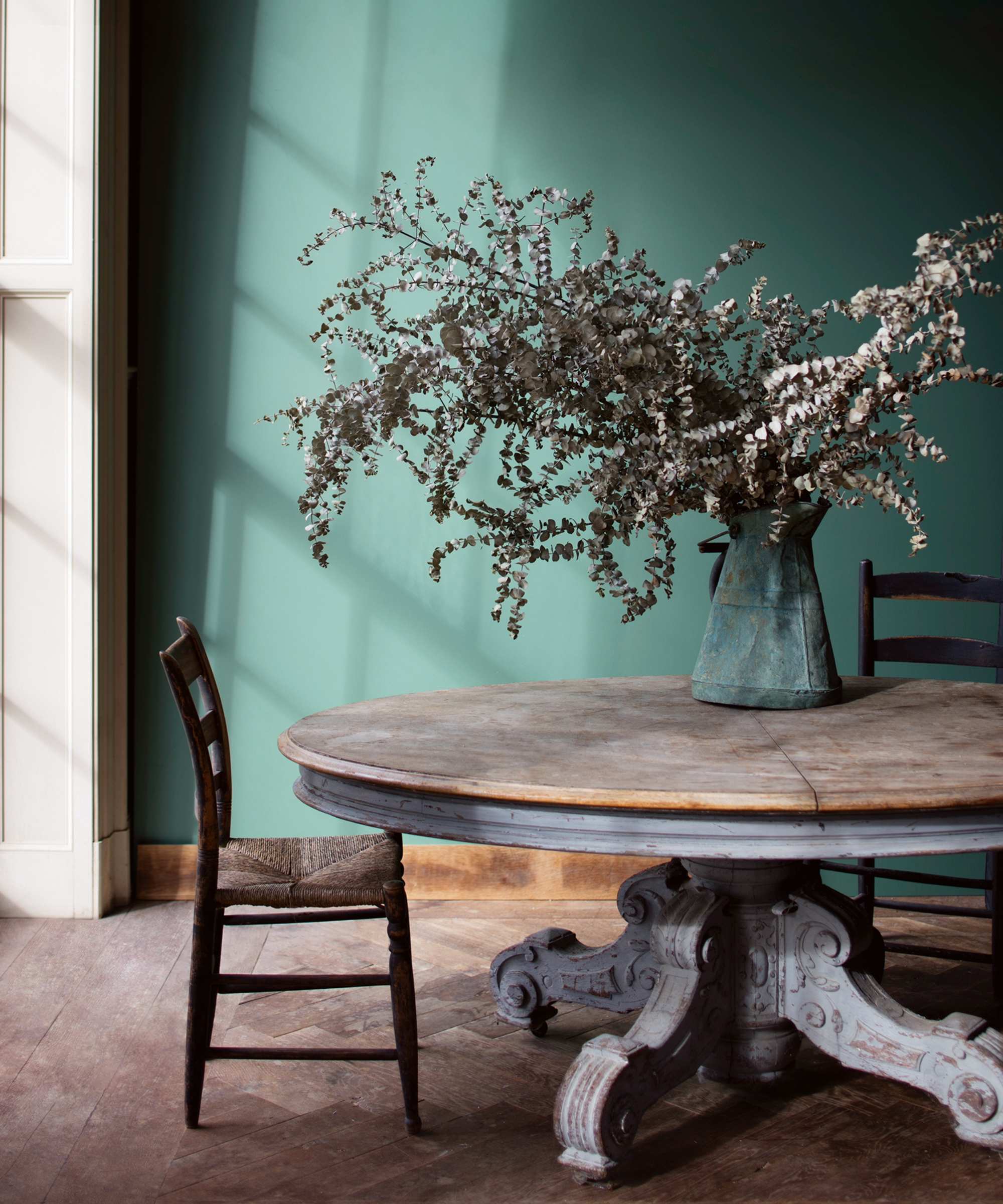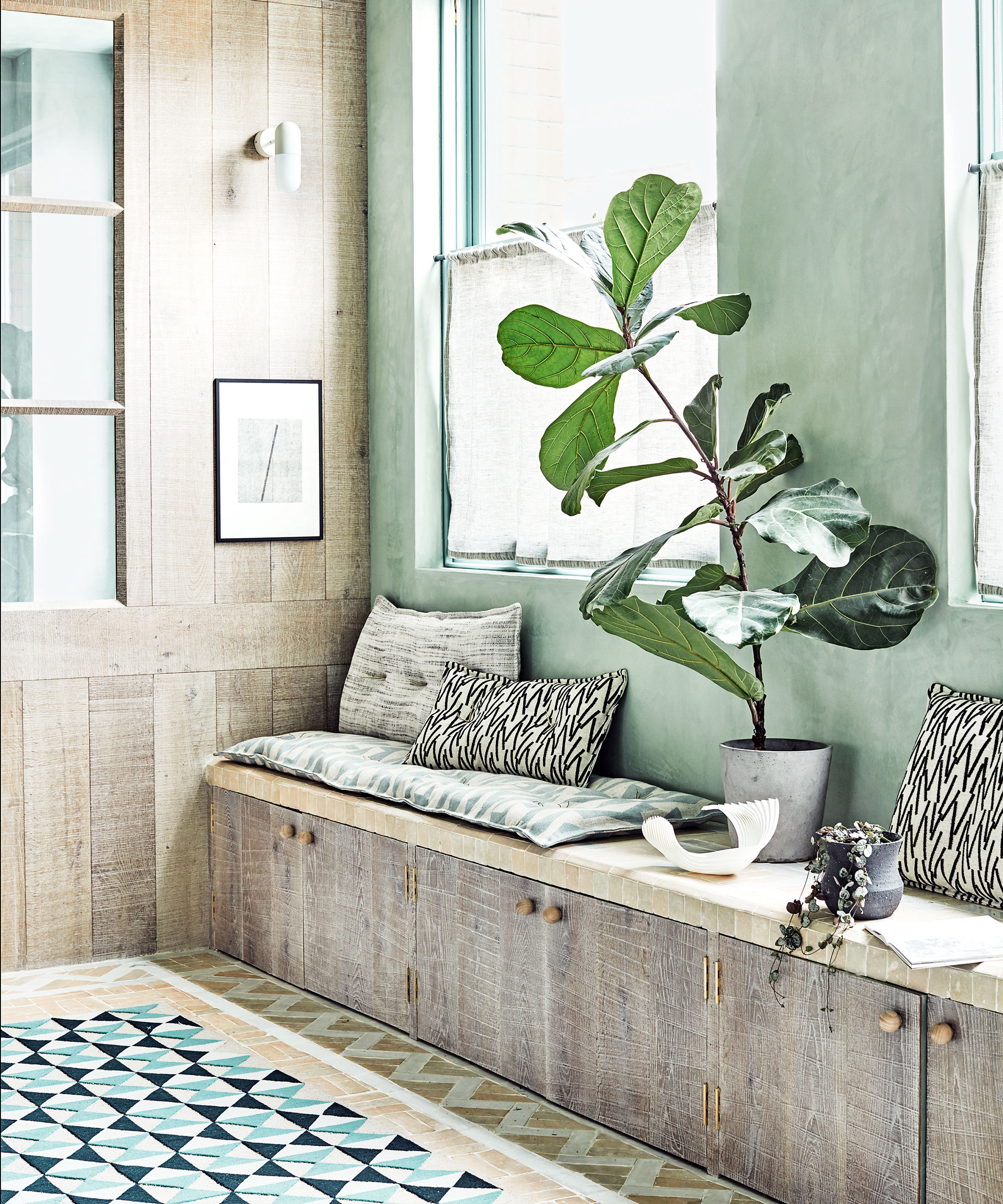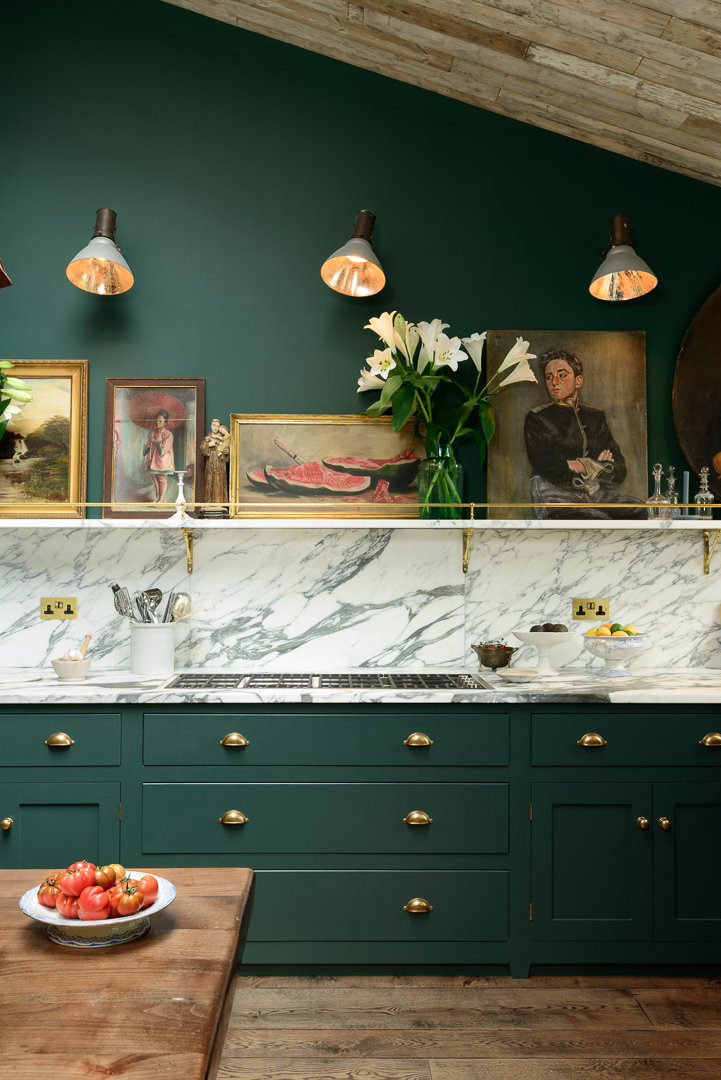What color is good for health? Why experts agree on this color's powerful healing potential
Green is considered the best color for health and well-being, influencing everything from our behavior to our decorating and lifestyle choices


If you are struggling with physical and mental worries and anxieties, then you may be wondering if your home can help. If so, it is worth considering what color is good for health. According to color psychologists, the best color for good health is 'green'.
Symbolizing nature, growth, and health, the color green is an enduring favorite when it comes to interior design. Whether using it as a statement pattern, as a bold block color, or as a subtle accent, using green in the home is a tried-and-tested method to reduce anxiety, calm, and heal the mind and body.
Room color ideas are the perfect way to transform a space easily, adding personality and character, says Ruth Mottershead, creative director of Little Greene. However, bold tones can be too hard, and can often worsen health, whether mental or physical, so you'll want to consider what are the most relaxing colors for your home, whilst also avoiding the most stressful color, too.
Here color psychologists, interior designers, and experts reveal why decorating with green will aid stress relief – and how to curate green room ideas that are pleasing by using the color wheel to create calming color combinations for rooms, using green as an accent shade, and what variations to use to create a scheme that won't overwhelm.
What color is good for health?
Green is in general a calming and relaxing color. Being the color that represents nature, it’s one that makes us feel good and positive. ‘The poet and philosopher Goethe used to describe 'green' as a useful color, a good color to have around,’ explains Francesca Wezel, founder of Francesca’s Paints.
Green hues from olive to emerald, through to chartreuse and sage and on to juniper and seafoam – bring serenity to a space, so are ideal for living areas and bedrooms to promote rest and relaxation, says Jane Rockett of Rockett St George. And as they aren’t overpowering or overwhelming, they can make a small room seem more spacious as well as increase our health and well-being.
Of all the cool colors, green is the most versatile. ‘It connects to nature and is said to evoke feelings of balance and vibrancy,’ says Jane. ‘It’s all about what you pair it with,’ adds Judy Smith of Crown Paints. ‘Greens with a blue base are impactful, so introducing soft tones of clay white and chalky grey in furniture and accessories, while keeping the flooring light, brings balance and a calming feel to a scheme.’ Greens with a yellow undertone, such as olive, pop alongside gold or bronze, which enhance their warmth.
Design expertise in your inbox – from inspiring decorating ideas and beautiful celebrity homes to practical gardening advice and shopping round-ups.
What does the color green symbolize?
Often described by color psychologists as a non-threatening color, the color green symbolizes calmness, serenity, and tranquillity, making it a wonderful choice if you hope to reduce stress and anxiety in humans.
Fresh, cool green can create a relaxing atmosphere in any room. 'It is associated with nature, outdoors, growth and creativity and, as it is such an organic shade, it is very easy to live with,' says Charlotte Crosby, head of creative, Farrow & Ball. 'The important thing is to pair whatever hue you choose with the right accent color to create a feeling of flow throughout a room.'
'One important thing to remember when choosing a healing color scheme is that there is no "one size fits all" rule,' says Karen Haller, color psychology specialist, teacher, and best-selling author of The Little Book of Color. 'Cultural differences, past experiences, and emotions can play a significant role in how people perceive color.'
Do pay close attention to how the color green makes you feel and then carefully consider whether this color would work in your home to improve health.
How to use the color green for good health?
Predominantly green color schemes bring serenity and tranquillity to any space because they are on the cooler end of the spectrum.
To make green color schemes look good, it's important to do a little in-room research first. To begin with, consider the room's natural light. Is it a cool, east- or north-facing light that the room gets or a warm one? Knowing this will help you choose a balancing shade – warmer ones for cooler rooms and cooler ones for warmer rooms. Here is how to use green to promote health, vibrancy, and good fortune.
1. Up your green credentials

Veronese Green soft touch matte for 118ml, Century collection, Benjamin Moore.
Bringing the outdoors in by having green walls in your home is always a good idea; the nod to nature will create a calm atmosphere however busy the space, so integrating the color into a well-used sitting room works just as well as in a spa-style bathroom. Greens are also said to inspire creativity, making them ideal for a home office.
Here, Benjamin Moore’s Veronese Green would find the perfect setting in an east-facing room, as the moody feel of its blue pigments will feel brighter in the morning - while calming that strong early light – and cozier in the afternoon and evening.
2. Enhance vitality with a green entryway

Green is a great choice for an entryway – particularly one that offers views of the garden beyond. ‘If you think of the color green in the backyard, it’s the backdrop for the whole setting – the foliage, grass, and trees,’ explains Emma Deterding, founder and creative director of Kelling Designs. ‘You can see how any color will go with it. But in an entrance, it adds a freshness and provides a base from which personality can shine through, setting the tone for the rest of the home.’
Emma recommends using it with creams and whites to keep the entryway bright and airy. ‘We like to use a zesty green to stimulate the senses and add an element of fun. Avoid going too dark either with the green or combining colors, or you might feel you’re entering an oppressive pine forest.’
3. Team green with stress-reducing blue

‘People often feel nervous about teaming blue and green, but I believe it’s a quintessential pairing,' says Tricia Guild, founder, and creative director, Designers Guild. 'Just imagine the landscape – the endless blue optimism of a summer sky against a green and pleasant land. It’s a classic combination that evokes familiarity and comfort.'
For decorator and designer Susan Deliss, the old adage of never mixing blue and green is nonsense. ‘It just doesn’t occur to me to work with a rule book when it comes to color. It’s about what feels right for the room, its light, and the environment around it.'
4. Pair nature's palette with natural materials

One of the most desired color trends, green kitchens are perfect for those wanting to reconnect with nature. With its calm, earthy feel, green works beautifully in any room of the house, especially when complemented with natural stone and wood elements. Its versatility also makes it a wonderful addition to just about any other paint color.
Green, like most shades, looks fabulous with white – and is perfect for cabinetry and backsplashes if you are looking for classic painted kitchen ideas. You can’t beat the clean crisp feel that the two colors together create – especially in modern rustic or country kitchens with low ceilings.

Jennifer is the Digital Editor at Homes & Gardens, bringing years of interiors experience across the US and UK. She has worked with leading publications, blending expertise in PR, marketing, social media, commercial strategy, and e-commerce. Jennifer has covered every corner of the home – curating projects from top interior designers, sourcing celebrity properties, reviewing appliances, and delivering timely news. Now, she channels her digital skills into shaping the world’s leading interiors website.